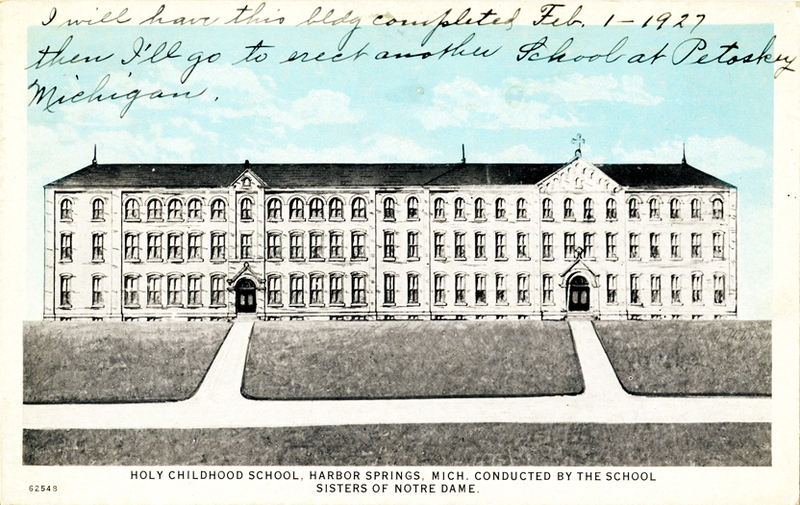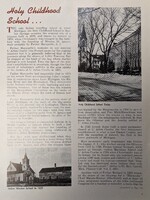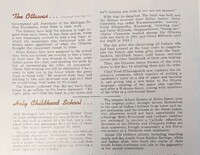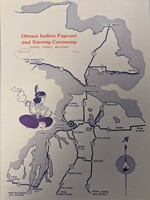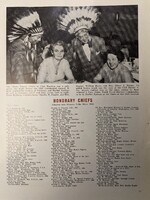Holy Childhood Boarding School
The Holy Childhood School of Jesus in Harbor Springs, Michigan is considered the first federally run boarding school in Michigan. Officially Holy Childhood opened in the 1880s, but it was considered the second boarding school in Harbor Springs.
The original school was a mission called New L’Arbe Croche that opened in 1829 but was only open for a few years. This mission school was constructed with the help of Odawa tribes in the area and had lessons in Anishinaabemowin (Michigan Radio, 2015, paras. 12-13).
But changes in federal policy towards Native Americans such as a push for assimilation, federal funding and the Carlisle Industrial School as a model, Holy Childhood transformed and became like other boarding schools. Even with federal funding, there was still a heavy connection with the Catholic Church, as even postcards draw attention to the Sisters of Notre Dame running the school.
Although the assimilation mandates officially ended, students were punished quickly and harshly for expressing their identity, particularly by speaking Anishinaabemowin (Michigan Radio, 2015, paras. 17-20). Holy Childhood stayed open for the next 102 years which was one of the very last to close in the United States (Schanz, 2021, para. 9). While records note the official closure in 1983-4, some former students recall attending until 1986 (Stebbins, 2021, para. 25).
The nuns at Holy Childhood were known for harsh treatment and abuse towards the students (Stebbins, 2021, para. 42) in addition to punishment for not speaking English. In addition, the nuns treated students differently based on the color of their skin (Michigan Radio, 2015, paras. 29-30). Some former students recall how they had no names but were assigned numbers and how it could be months to years before being able to see their families again (Walker, 2021, paras. 17-24).
Meanwhile, private organizations such as the Michigan Indian Foundation, Inc. promoted the school and its history to potential donors. This can be seen in two pages of an article below detailing Holy Childhood's founding included in the foundation's 1949-1950 Annual Review. The first page on the left details the history, particularly those of religious figures with ties to the school and region and Holy Childhood in a positive light. The page on the left, describes how nuns assigned to the school participated in a naming ceremony, partaking in cultural traditions their treatment of children at the schools, where they are described as "lovingly devote themselves to the care of Indian children."
Letters and publications written by the foundation are examples of how white, wealthy Americans maintained their privileged status while claiming to help their Indigenous neighbors. The members of the foundation were granted “Honorary Chief” status in the Ottawa tribe at an annual Naming Ceremony. This ceremony was highly publicized and served as an economic boost to the area's tourism industry. In a letter to their donors, the foundations recognize the harm committed in the past, yet failed to allow Native people to speak for themselves.
In 2007, Holy Childhood was demolished but the area within the community is still associated with education and religion with a daycare facility and parish on the same spot.
